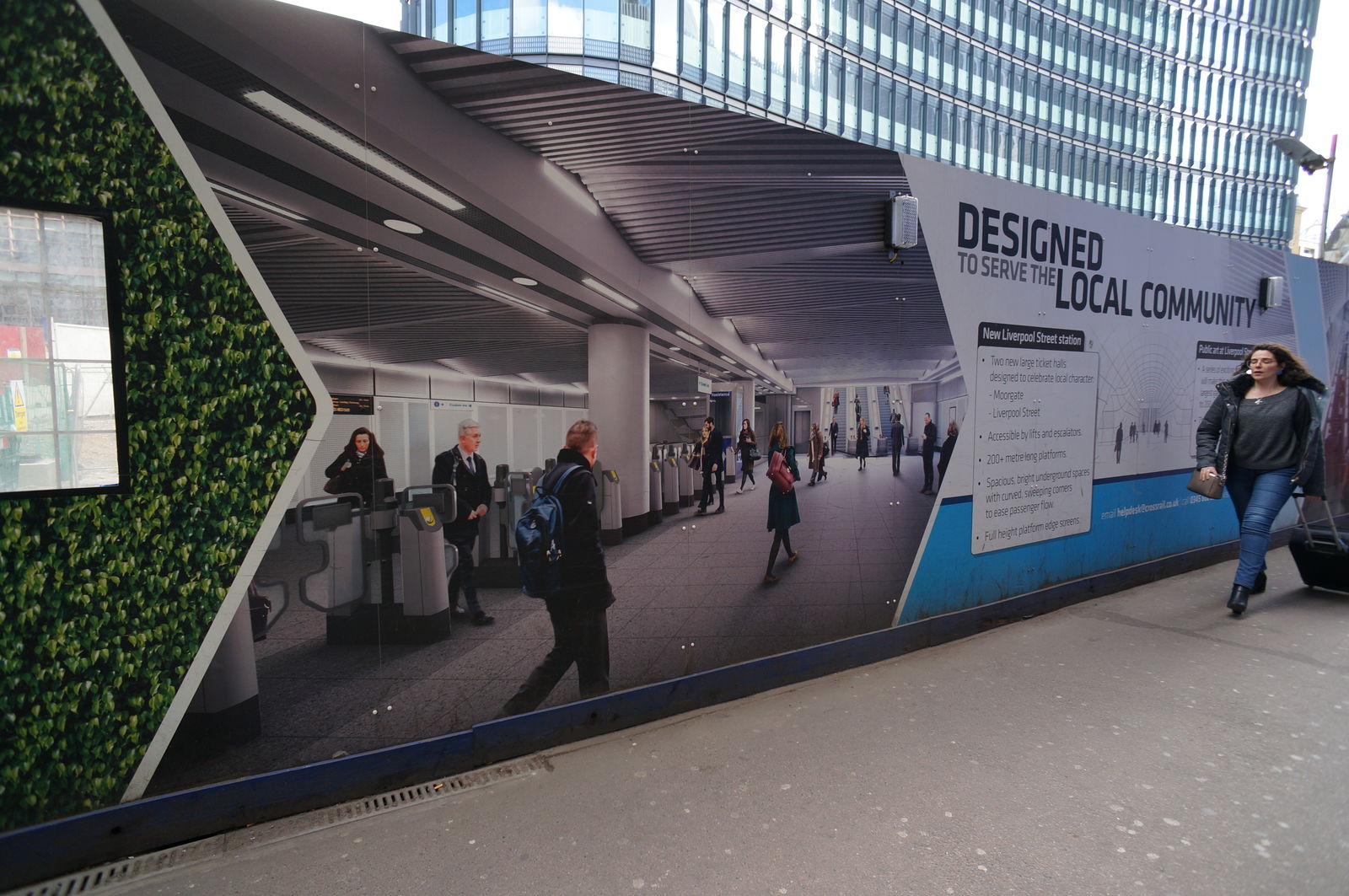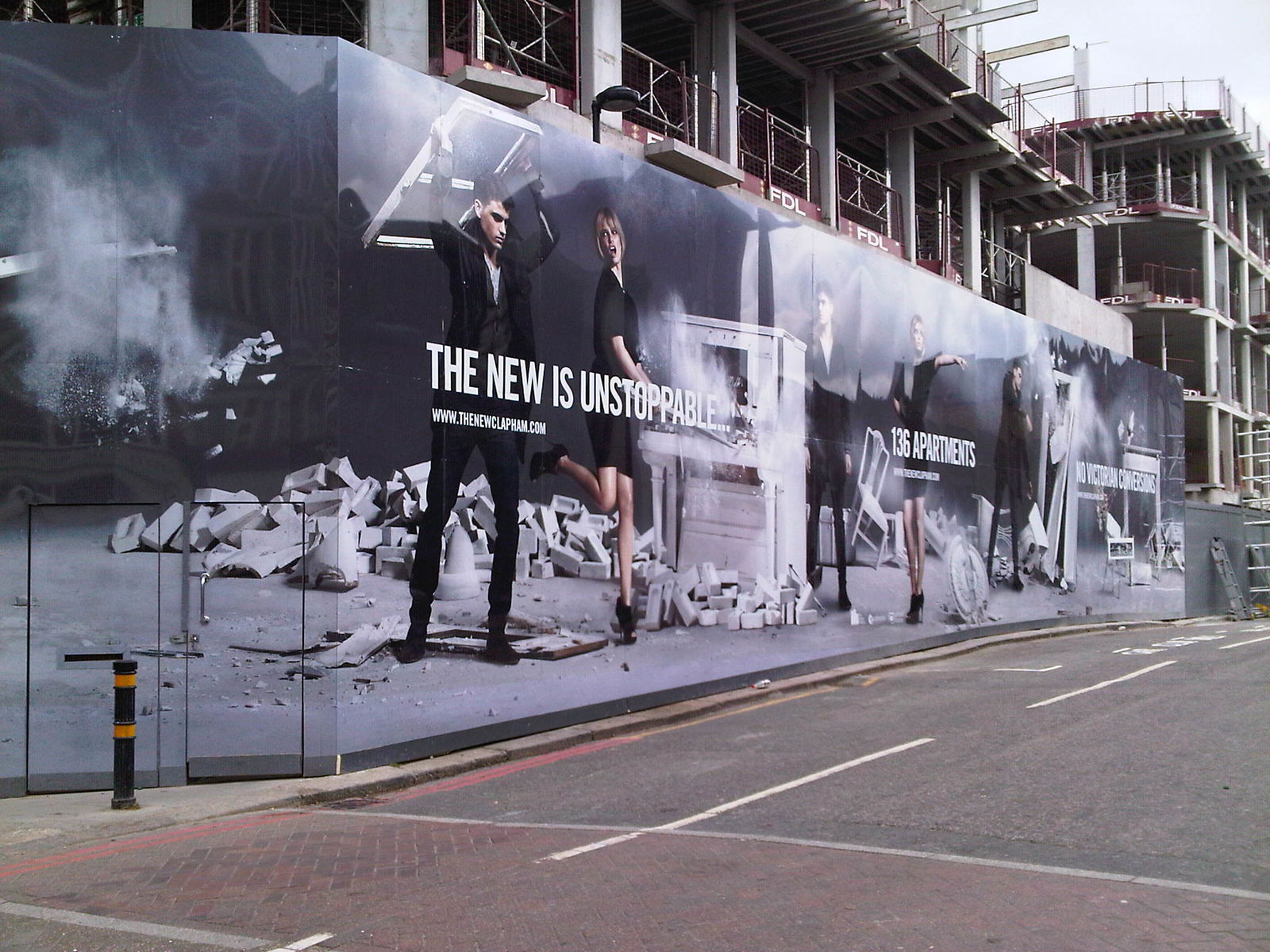Looking for some advice?
Despite the ongoing challenges presented by Covid19, we’re here to help. If you’re working on a large format project, and have any questions, please get in touch via our contact form – our expert project managers are on hand to answer any of your questions.
For many contractors, developers, and retailers, hoarding graphics represent a fantastic outdoor advertising opportunity. But once you’ve decided you want to order a set, you can hit a metaphorical ‘bump in the road’ if you’re not sure how to actually go about designing and ordering them.
Fortunately, this process needn’t be overwhelming or complicated. A lot will come down to the helpfulness of your chosen print supplier – but having something of an action plan in place can make the process of sorting this aspect of your project a lot easier to handle (and a lot less stressful).
PressOn have been working on hoarding graphics projects, for all kinds of briefs, for years – and we know a fair bit about how to make this process simple and straightforward. We thought it would be useful to put together a very simple checklist to use, which explains how to order hoarding graphics from start to finish.
How do I order hoardings?
We’re presuming that if you’re reading this, and you’re at this stage, you already know that you want some graphics for your hoardings – but how do you actually go from the seed of an idea to placing an order for a set of graphics you’re happy with?
Step 1 – Decide what you want your hoardings to do
You don’t need to have specifics in mind at the earliest stage, but having a vague idea of what you want your hoarding graphics to do is important. This will usually come down to whether you want to use them for outdoor advertising, community engagement, or for a more generic design. Have a look at our compilation of our favourite hoardings projects for some great examples of unique way to use hoardings if you’re keen to do something a little unusual.
Step 2 – Figure out your measurements
This is where you’ll need to get a little more precise about things – specifically, measurements. There are some very specific regulations in place for the size and shape of construction hoardings, but this makes finding out the precise measurements for graphics very straightforward.
You don’t need to have these down to a millimetre in order to get a rough quote – simply get in touch with PressOn and we’ll be able to give you a ballpark figure.
Step 3 – Find and contact a print supplier
With a concept in mind and at least some vague specifications to hand, you’ll then need to get in touch with some print suppliers. Don’t be afraid to shop around, as different printers will offer different services at different prices.
Most print suppliers will be willing to discuss your specific requirements and offer a ballpark figure, but this shouldn’t be your only point of comparison. Ask them about all the services they offer, and what sets them apart from their competitors.
Some companies will only print to certain sizes, or onto certain materials; some will only offer printing, while others can provide installation and even site surveys. A survey such as this might not be essential, but it can save valuable time and money in the long run, allowing your supplier to ensure all variables such as materials, sizing, and access restrictions are taken into account. This can save a lot of money in costly revisits to the site. Not all suppliers offer this service, although at PressOn we find it often makes everything run more smoothly (contact us for more information!)
It can also be a good idea to see if it’s possible to take a look at some samples from any prospective print suppliers – or better yet, see if they’ll be willing to show you their facilities and machinery.
Step 4 – Pick a supplier, and come up with a plan
Once you’re satisfied with the supplier you’re going to hire for the project, you’ll need to enter into a period of discussion to determine the finer points of the specifications for the printing itself. This will mean choosing the right substrate (printing material), and working out if any other specs – such as anti graffiti provisions – need to be taken into account.
This is the stage when your chosen print company will demonstrate their expertise – a great supplier will know exactly what kind of solution you’ll need, and the best substrate and machinery for the job.
Your print supplier should also be able to tell you if you need to conduct a site survey. This will be the case if there are things that could impact the way the hoardings need to be installed, such as working at height, or any road/public road or pathway closures. A good print supplier will usually conduct this themselves, so you shouldn’t have to worry about outsourcing this.
Step 5 – Finalise your artwork
This might seem like one of the first things you would need to think about – and it’s very tempting to make arrangements for artwork before anything else, but it actually makes more sense to leave this until the finer points have been worked out. You print supplier will be able to let you know about any requirements for things like file types for the graphics themselves, as well as any contextual issues (such as backlighting etc) you might not have considered.
With this said, the very best print suppliers can offer some flexibility – at PressOn, we try to approach projects from the angle of ‘what can we do to ensure the client can use the exact designs they want?’, and we don’t like having to ask our clients to compromise on their visions.Nevertheless, holding some discussions about the project in advance can be a good way to raise any potential warning flags – which can save you a bit of effort down the line.
When it comes to actually having the graphics designed, there are various pros and cons to outsourcing it vs working on it in-house, and the path you take will depend on your own situation and budgets etc. One thing to bear in mind is ensuring the designer responsible with putting your graphics together has at least some experience with designing for large format printers – the relevant techniques, software to use, and so on.
For more information on this, we have a set of hoarding artwork guidelines that you can take a look at. If you’d like to know more, get in touch!
All sorted?
Hopefully, this checklist will help you get your head around the process, and give you a broad overview of what you’ll need to think about when you’re going about ordering your hoarding graphics. If you have any other questions, however, feel free to get in touch with us here at PressOn – we’re always happy to discuss a project in more detail, or to answer any questions you may have.







